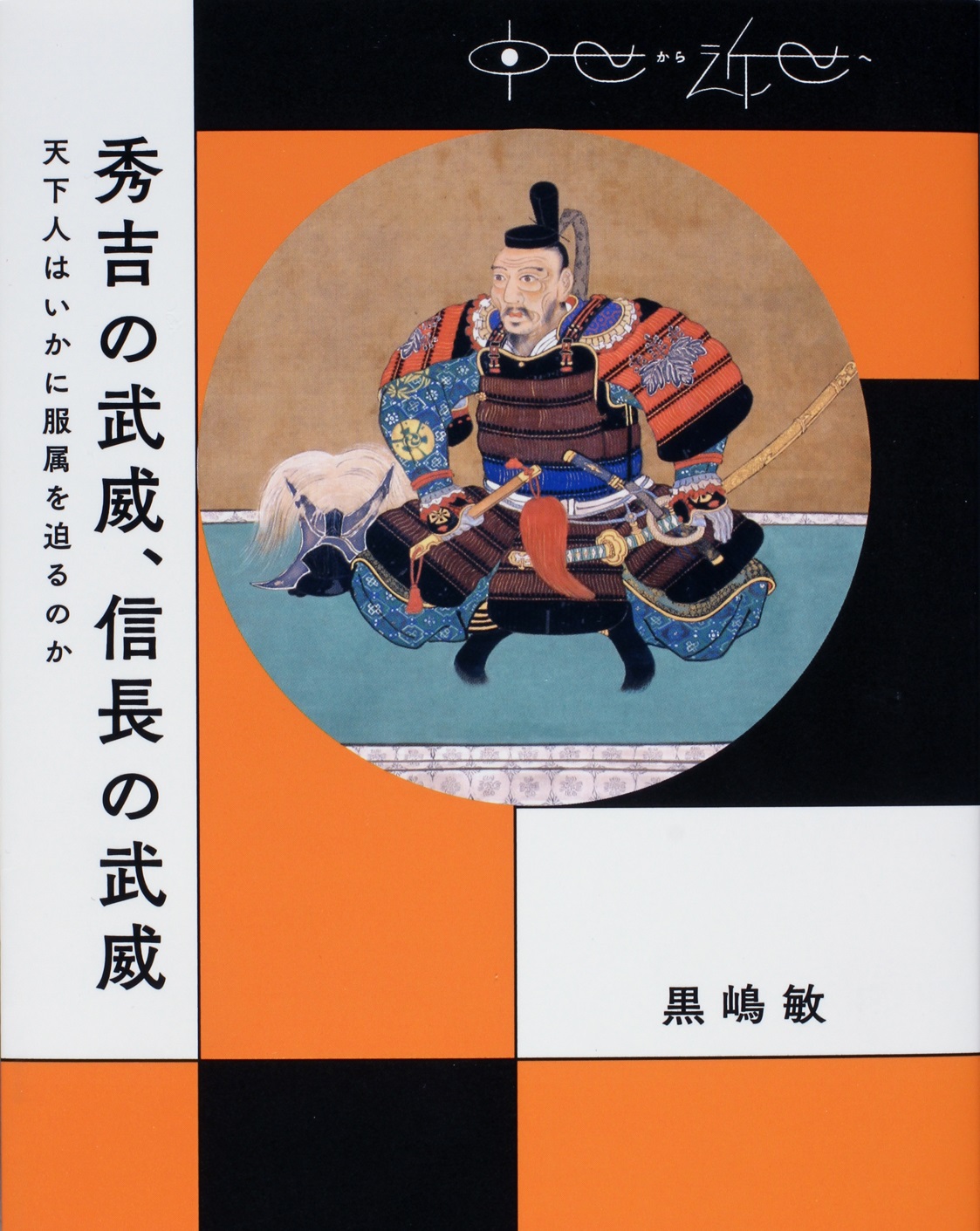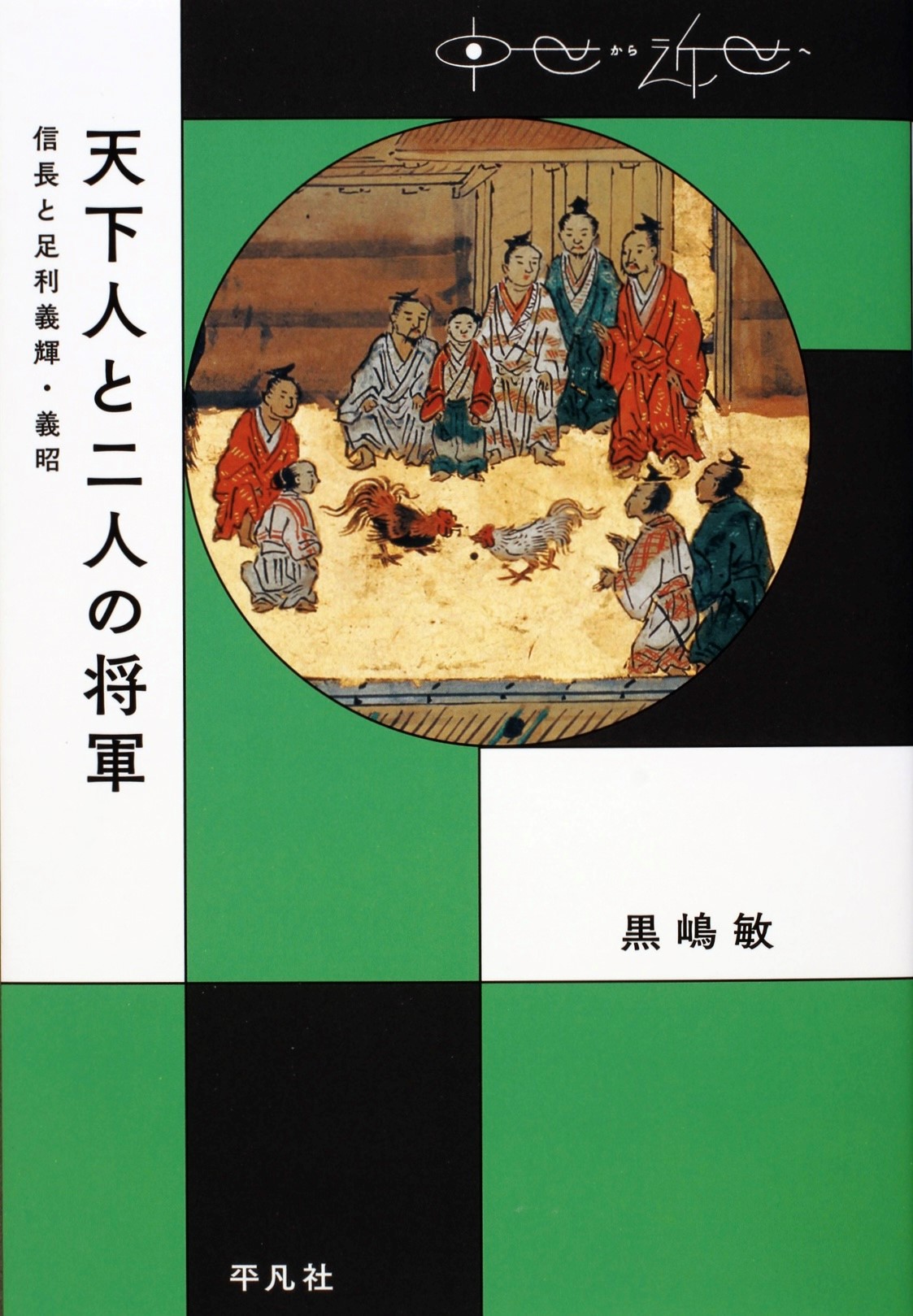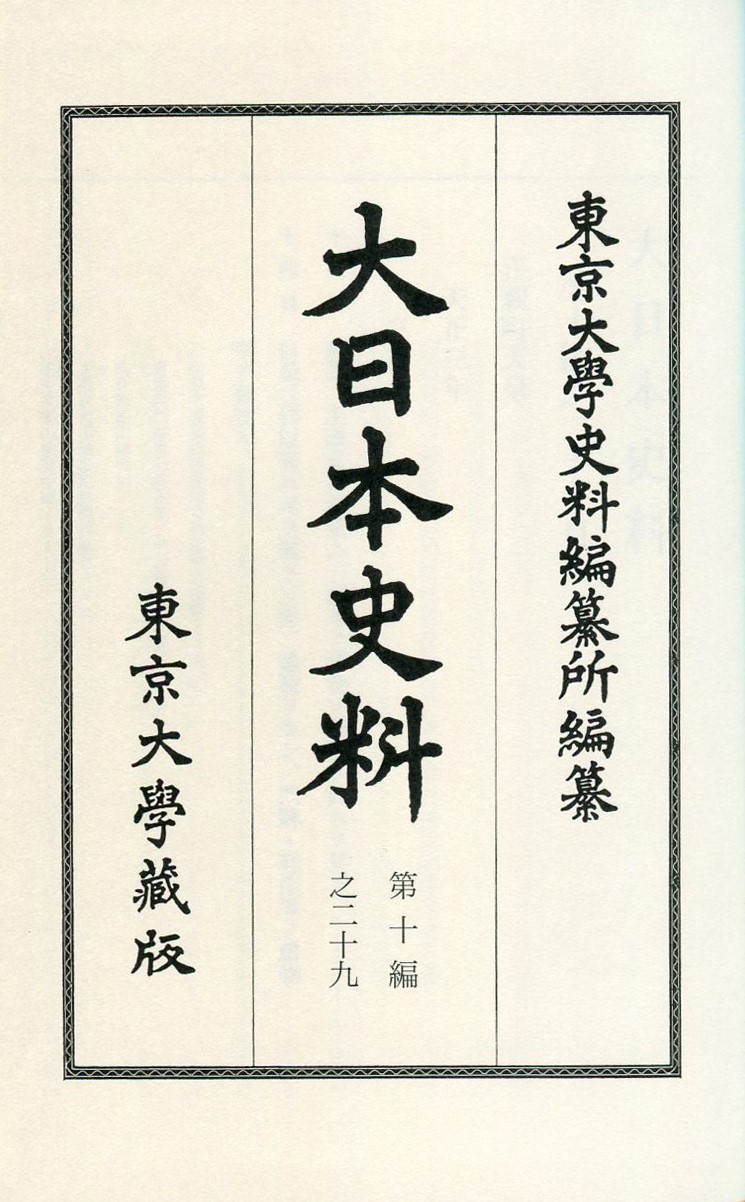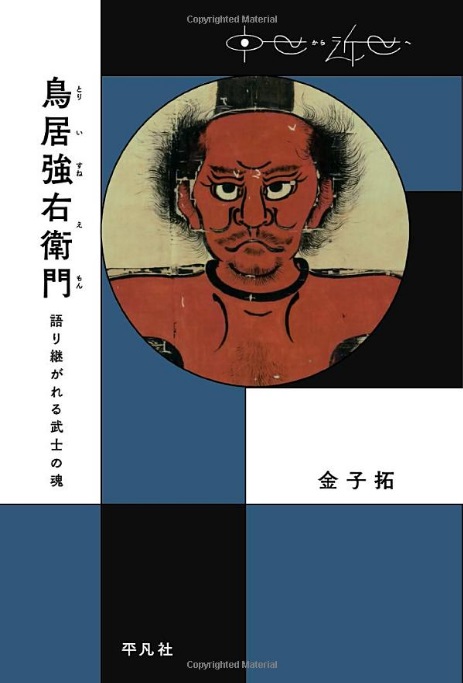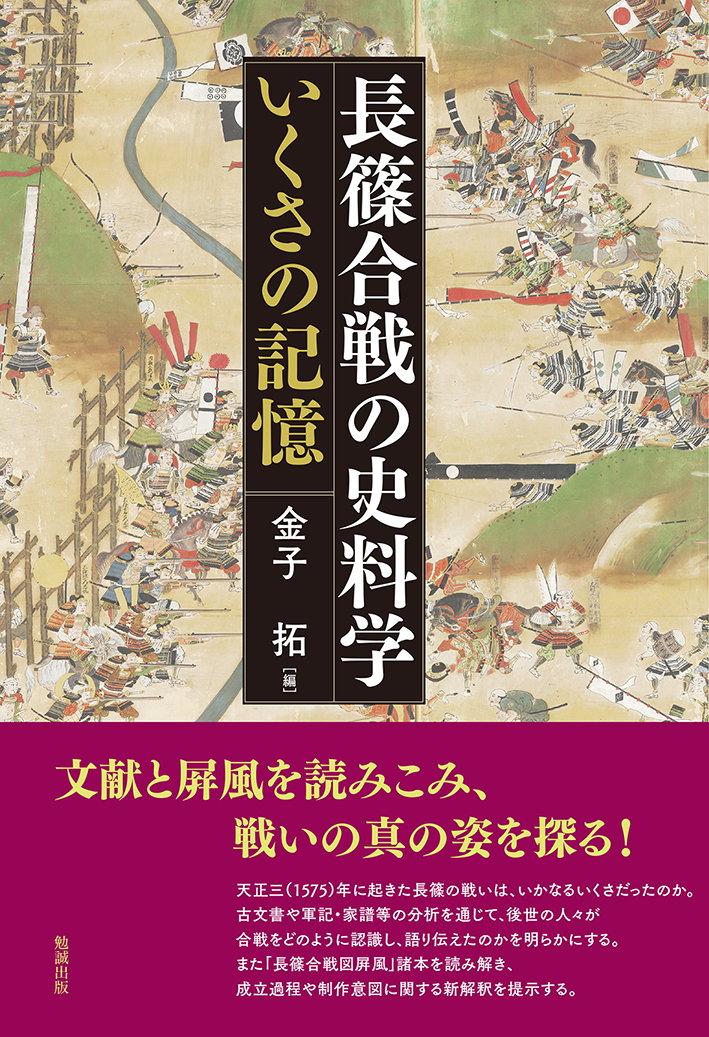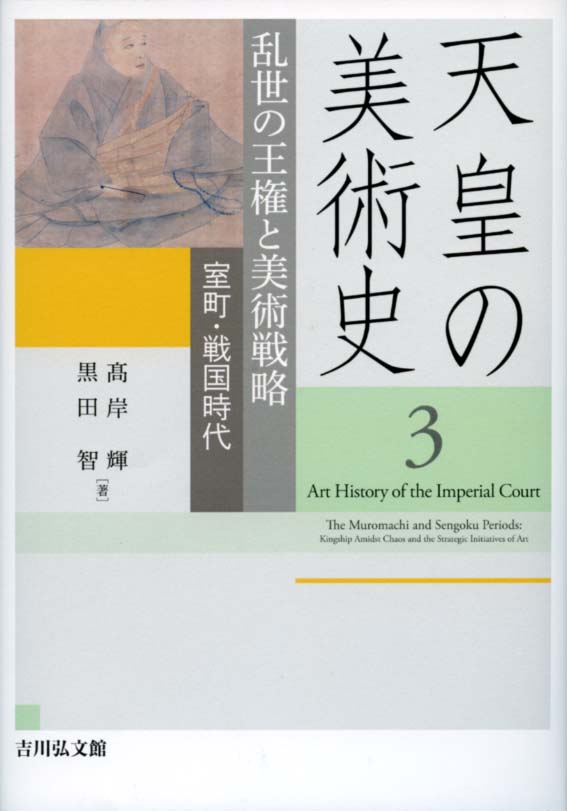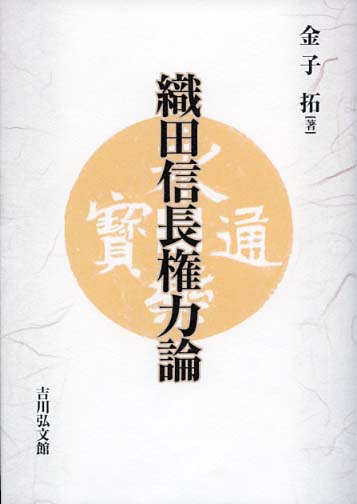
Title
Oda Nobunaga Kenryoku-ron (A Study of Oda Nobunaga’s Power)
Size
436 pages, A5 format
Language
Japanese
Released
April 28, 2015
ISBN
9784642029254
Published by
Yoshikawa Kobundo
Book Info
See Book Availability at Library
Japanese Page
This book is a collection of previously published articles in which I have attempted to shed light on the mechanism whereby Oda Nobunaga’s power was exercised and the people who were involved in this, and I have done so by examining the movements of warriors and nobles who served Ashikaga Yoshiaki and historical sources relating to temples, shrines, and the imperial court.
But I did not initially set out to undertake a study of Oda Nobunaga. When I embarked on my studies it never even entered my mind. Why, then, did I end up bringing out this collection of articles about Nobunaga? It was because my work came to entail compiling a collection of historical sources dating from the time of Nobunaga, as described elsewhere on this website (Historical Sources of Great Japan, sect. 10, vol. 29).
In the process of compiling a collection of historical sources one also learns from the large body of research accumulated in the past. In this respect it is no different from the way in which one conducts one’s own research, seeking out problem areas on the basis of prior research and conducting investigations of the subject from one’s own perspective. The task of compiling historical sources about individual events requires the same amount of work as that needed to complete a report or, in some cases, a research paper. But the compilation of a collection of historical sources differs from one’s own research in that, whereas in the case of the latter one picks and chooses from among the sources that serve as one’s material in an attempt to shed light on the historical picture, in the compilation of a collection of historical sources one endeavours to collect as many historical sources as possible about a particular event and presents them as research material without making any arbitrary choices.
As I was compiling from such a position the historical sources about events relating to Oda Nobunaga, I was struck by something strange. From the sources that I had gathered I was unable to gain any sense of the image of Nobunaga that had been planted in me (and probably in most Japanese), namely, the image of a strong and scary man who aspired to absolute power, was not shackled by old thinking, eliminated those opposed to him as he charged ahead, and overwhelmed others. On the contrary, what emerged from the sources with which I came in contact was the picture of a conservative, cooperative, and rational man who did his best to respect the established order, listened to the opinions of both sides, and endeavoured to make decisions without overreaching himself. There was not the slightest evidence of an attitude indicative of a desire to stand over and above the court and emperor. I went so far as to check repeatedly with specialists in Nobunaga studies about each individual point as to whether this picture of Nobunaga was odd.
It was at any rate on the basis of such concerns that the articles in parts 2 and 3, which form the core of this book, were written. In recent years there have been active moves in academia to reexamine the image of a high-handed Nobunaga, and this book too lies within this current of research. In fact, some people consider it to have played a part in shaping this current, and I appreciate their assessment. That I was able to carry out such investigations was probably due to the fact that I had no attachment to Nobunaga as a research subject and was able to approach him from a fresh standpoint. In other words, I was able to approach him from an objective position, free from any emotions of admiration, respect, or animosity.
The problem is, however, that once one puts together a book like this, there is a danger that one will now come to view Nobunaga solely on the basis of this picture of him as someone who was cooperative and conservative and valued order. However mindful one may try to be of an objective position, one will end up interpreting what Nobunaga did from only a particular angle, and consequently one may select historical sources that are convenient for one’s own purposes. I have the feeling that I too have become unconsciously imbued with such a stance. This is a dangerous symptom.
How, then, should one avoid this danger? Ultimately, all one can do is to immerse oneself, as I was doing previously, in the task of compiling a collection of historical sources—collecting sources related to a particular event and reading them carefully—and on that basis present the picture of Nobunaga that emerges. It cannot be helped if the picture that emerges is different from that which one had previously envisaged. One must simply emend it with humility.
No one would deny that Nobunaga is one of the figures in Japanese history whose image has got ahead of the reality to the greatest extent. The only way to clarify a true picture of him is to steadily continue with the basic task just described. This method is not in the least confined to the study of Nobunaga or the study of Japanese history. No academic discipline can exist without basic research. I believe that research aimed at investigating the image of Nobunaga in Japanese history symbolically illustrates the importance of this basic task.
(Written by KANEKO Hiraku, Associate Professor, Historiographical Institute / 2018)



 Find a book
Find a book


 eBook
eBook